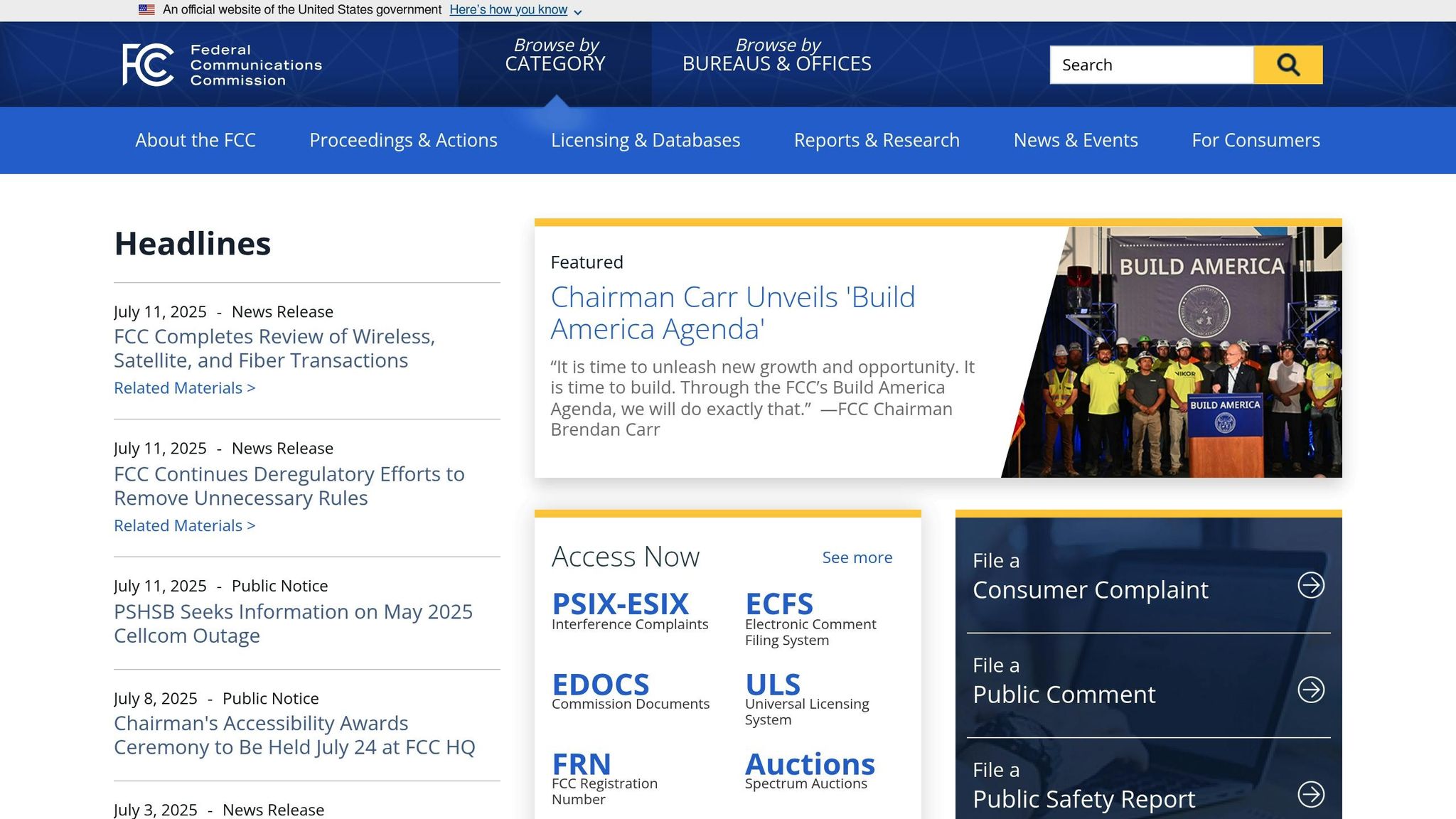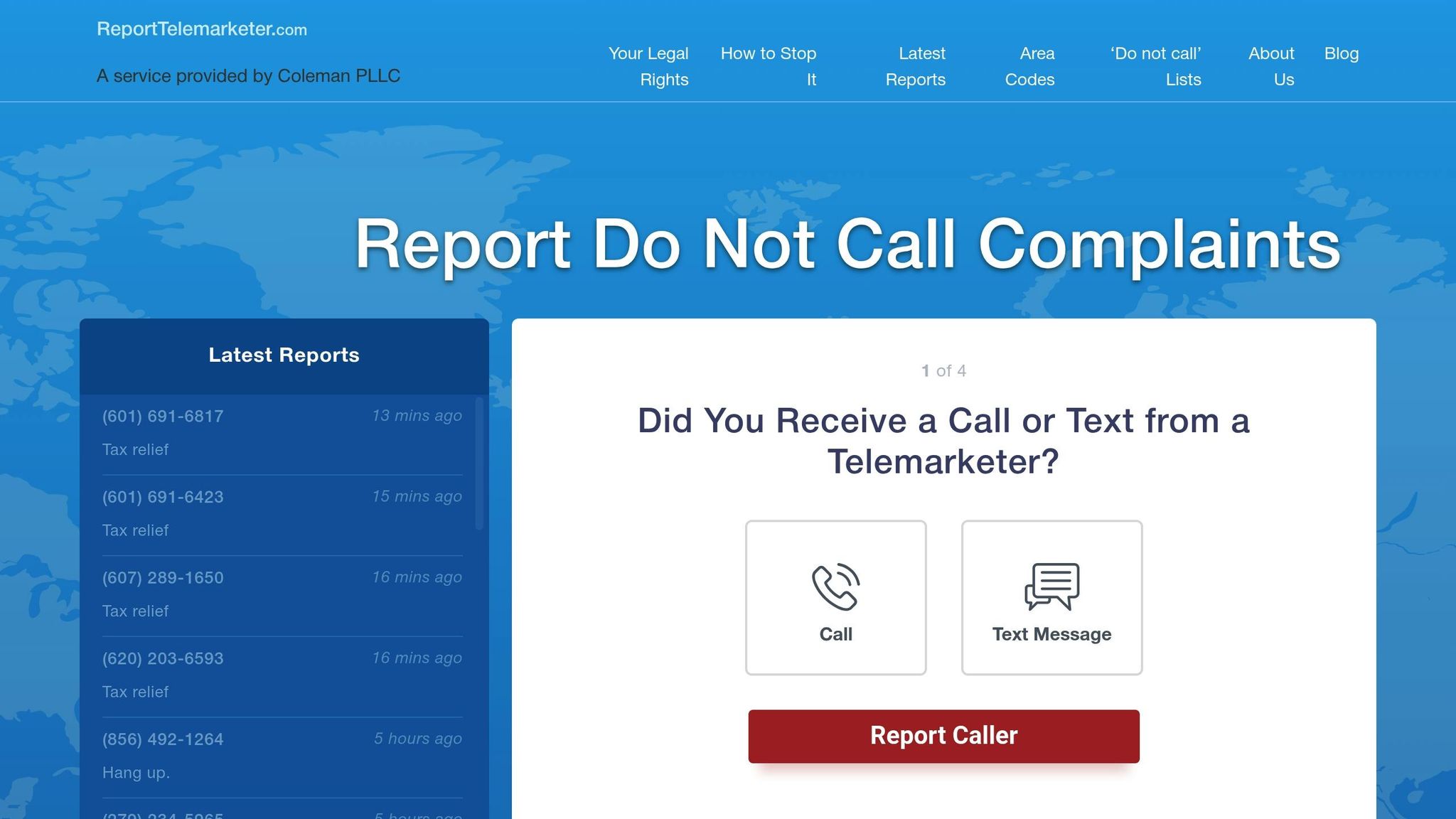
The FCC issued its largest fine ever – $225 million – against two Texas-based telemarketers, John C. Spiller and Jakob A. Mears, for making nearly 1 billion spoofed robocalls between January and May 2019. These calls falsely advertised short-term health insurance while impersonating legitimate companies. Key violations included targeting numbers on the National Do-Not-Call Registry and using caller ID spoofing to mislead recipients.
Key Facts:
- Fine Amount: $225 million (largest in FCC history).
- Calls Made: ~1 billion spoofed robocalls (200 million/month).
- Violations:
- Caller ID spoofing (Truth in Caller ID Act).
- Calls to numbers on the Do-Not-Call Registry.
- Misleading health insurance sales.
- Consumer Impact: Eroded trust in caller ID systems and caused financial harm.
The FCC’s action highlights its commitment to curbing illegal robocalls. Consumers can protect themselves by reporting unwanted calls, using call-blocking tools, and registering with the National Do-Not-Call Registry. This fine sends a clear warning to violators: breaking telemarketing laws carries severe consequences.
FCC enforces largest fine ever of $225 million against telemarketers who

The Telemarketing Violations That Led to the Fine
The FCC handed down a $225 million fine to a telemarketing operation that blatantly violated federal consumer protection laws. Here’s a breakdown of the offenses that resulted in this historic penalty.
The Scope of the Robocall Campaign
This operation, spearheaded by key individuals, was responsible for nearly 1 billion spoofed robocalls.
Misleading Products and Deceptive Practices
The robocalls were used to sell short-term health insurance plans. However, the telemarketers employed deceptive tactics, misleading consumers about the nature and benefits of the insurance being offered.
Legal Violations
The operation violated multiple laws, including:
- Unauthorized robocalls to cell phones, breaching the Telephone Consumer Protection Act (TCPA).
- Spoofing caller ID information, in violation of the Truth in Caller ID Act. This law prohibits transmitting false or misleading caller ID details with the intent to defraud, harm, or wrongfully gain something of value.
- Calling numbers listed on the National Do-Not-Call Registry.
As the FCC explains:
"Under the Truth in Caller ID Act, FCC rules prohibit anyone from transmitting misleading or inaccurate caller ID information with the intent to defraud, cause harm or wrongly obtain anything of value".
These actions demonstrated a systematic disregard for consumer protections and federal regulations.
In January 2021, the FCC imposed the $225 million fine on the individuals and companies involved, including John C. Spiller, Jakob A. Mears, Rising Eagle Capital Group LLC, JSquared Telecom LLC, Only Web Leads LLC, Rising Phoenix Group, Rising Phoenix Holdings, RPG Leads, and Rising Eagle Capital Group – Cayman. Their coordinated efforts to make unauthorized robocalls, spoof caller IDs, and ignore the National Do-Not-Call Registry resulted in this record-setting enforcement action.
Why the $225 Million Fine Matters
The $225 million penalty marks a turning point in telemarketing enforcement, signaling a move toward stricter regulatory actions against illegal robocalls.
Why This Fine Stands Out
This penalty isn’t just another fine – it’s the largest in the FCC’s history, and for good reason. The violation involved nearly one billion robocalls, an offense so massive that it demanded a response of equal magnitude. The fine underscores the FCC’s resolve to impose penalties that actually deter bad actors.
A key factor behind this hefty fine is the TRACED Act, which allows penalties of up to $10,000 per robocall. This law has equipped the FCC with the authority to impose fines that can genuinely affect large-scale operations. The timing couldn’t be more relevant, as spam calls surged by 26% last year, proving that traditional enforcement wasn’t cutting it. This record-setting fine sends a clear signal: robocall violations will no longer be treated as minor infractions.
What This Means for Future Enforcement
This fine is more than just a punishment – it’s a blueprint for how the FCC plans to tackle robocalls moving forward. The agency has ramped up its enforcement measures, aiming to reshape the practices of telemarketers and providers alike.
The FCC isn’t stopping at fines. It’s also strengthening call-blocking rules and expanding requirements for providers to block calls using do-not-originate (DNO) lists. These enhanced measures work hand-in-hand with financial penalties to create a more robust deterrent against illegal robocalls.
The numbers paint a stark picture of the challenge ahead. In April 2025 alone, Americans received an estimated 5 billion robocalls, a 3% increase from March. Even more concerning, the first four months of 2025 saw 18.9 billion robocalls – a nearly 12% increase compared to the same period in 2024. These figures highlight the scale of the problem and the need for aggressive action.
Other FCC Efforts to Combat Robocalls
Beyond financial penalties, the FCC is employing a range of strategies to fight illegal robocalls. One of the most impactful steps has been cutting off voice service providers that facilitate robocalls and requiring them to halt their operations.
An innovative approach involves labeling persistent offenders as Consumer Communications Information Services Threats (C-CIST). This classification allows the FCC to take swift action against repeat violators and provides a structured way to monitor these bad actors.
The FCC is also tightening regulations on gateway providers to curb robocall traffic from international sources. By addressing these entry points, the agency aims to reduce the volume of illegal calls reaching U.S. consumers.
The scope of the problem is staggering. Americans receive around 4 billion robocalls every month, costing consumers $13.5 billion annually. Complaints about unwanted text messages are also on the rise, with the FCC receiving over 24,000 complaints in 2024 through October. Meanwhile, RoboKiller estimated 19 billion spam texts were sent in September 2024 alone.
Together, the $225 million fine and these broader enforcement measures highlight the FCC’s commitment to protecting consumers from illegal robocalls, spoofed caller IDs, and unwanted communications of all kinds.
sbb-itb-a8d93e1
How Consumers Can Fight Back Against Illegal Calls
The FCC’s hefty $225 million fine sends a clear message to violators, but you don’t have to wait for federal action to protect yourself from unwanted calls. There are plenty of tools and resources available to help you take control right now.
How ReportTelemarketer.com Can Help

ReportTelemarketer.com offers an easy way to fight back. All you need to do is submit a detailed report about the unwanted call or text on their website. If they find the telemarketer didn’t have proper consent, their legal team will step in to file a cease-and-desist letter or a formal complaint – all at no cost to you.
What sets this service apart is its completely free structure for consumers. The legal team handles everything without requiring any upfront payment.
"As a consumer protection law firm, we offer our services at no out of pocket cost to you, the consumer…There is no out of pocket cost to you for our services and we do all the work for you."
Beyond using this reporting service, there are additional steps you can take to protect yourself from robocalls.
Steps to Protect Yourself from Robocalls
- Register with the National Do Not Call Registry: This should be your first step, even though it won’t block every call.
- Use call-blocking tools: Many carriers now offer built-in features to block spam calls, and most smartphones include settings to filter suspected spam. Third-party apps with spam number databases can add an extra layer of protection.
- Don’t engage with suspicious calls: Avoid pressing buttons or speaking, as robocallers use these interactions to confirm active numbers, which can lead to more calls. Let unknown numbers go to voicemail if you’re unsure.
- Be cautious with your phone number: Limit sharing your number online and consider using temporary or alternative numbers for online transactions.
- Report unwanted calls quickly: The faster you report a violation, the sooner enforcement agencies can act. Keep a record of dates, times, and any identifying details from the calls.
How Consumer Reports Drive Enforcement
When you report unwanted calls, you’re not just protecting yourself – you’re helping federal agencies take action against violators more effectively.
Consumer complaints are a cornerstone of federal enforcement efforts. The data collected helps agencies identify trends and prioritize their actions.
"By filing a consumer complaint and telling your story, you contribute to federal enforcement and consumer protection efforts on a national scale and help us identify trends and track the issues that matter most." – FCC
The numbers speak for themselves. In 2022, the FCC received about 119,000 complaints about unwanted and illegal robocalls. And just in 2024 (through October), over 24,000 complaints about unwanted text messages were filed.
These reports lead to real action. The FCC uses them to shape policies and build cases against violators. When multiple complaints show a clear pattern, agencies can more effectively target illegal callers.
Federal agencies also share complaint data to strengthen enforcement. For example, the FCC may pass complaints to the FTC when jurisdictions overlap, while the FTC uses the data to track illegal calling trends.
Different violations require different reporting channels:
- File a complaint with the FCC for illegal calls, texts, or suspected spoofing.
- Report telemarketers ignoring the Do Not Call list or telephone fraud to the FTC.
- For IRS scams, contact the Treasury Inspector General for Tax Administration (TIGTA).
- Forward spam texts to 7726 (or "SPAM") to help agencies monitor text-based threats.
Each report adds to the broader picture of telemarketing violations, helping enforcement agencies pinpoint where to focus their efforts. Together, these reports create a powerful tool for combating illegal robocalls and protecting consumers.
What This Fine Means for the Future
The FCC’s massive $225 million fine against illegal robocall operations marks a major turning point in the fight against telemarketing abuse. This record-setting penalty not only reflects the seriousness of the violations but also demonstrates a renewed commitment by federal agencies to crack down on these schemes. It’s a clear signal: robocallers are on notice, and the consequences for breaking the law are steep.
Key Takeaways from the $225 Million Fine
This penalty is the largest ever imposed by the FCC for robocall violations. The targeted operation violated federal laws by calling numbers on the National Do Not Call Registry, using spoofed caller IDs, and misrepresenting their affiliation with insurance providers.
The case also sheds light on how quickly these illegal operations can grow. With U.S. consumers receiving an estimated 4 billion robocalls each month, these schemes make up a significant portion of unwanted calls. Beyond the numbers, the fine underscores the FCC’s focus on protecting consumers from unlawful robocalls and caller ID spoofing. This makes it clear why staying alert and informed is so important.
The Role of Consumer Action
Consumer reports play a critical role in stopping illegal telemarketing. Agencies like the FTC and state attorneys general rely heavily on these reports to identify trends and build cases against offenders. As the Federal Trade Commission noted:
"The amended Rule gives effect to the Telemarketing and Consumer Fraud and Abuse Prevention Act (TCFPA). This legislation gives the FTC and state attorneys general law enforcement tools to combat telemarketing fraud, gives consumers added privacy protections and defenses against unscrupulous telemarketers, and helps consumers tell the difference between fraudulent and legitimate telemarketing."
Platforms like ReportTelemarketer.com simplify the process for consumers to report violations. By doing so, individuals contribute to enforcement efforts that can lead to impactful penalties, such as the $225 million fine.
The stakes are high. In 2024 alone, robocall scams affected more than 3.6 million Americans, resulting in an estimated $10 billion in financial losses. Each consumer report helps agencies better understand the scale of these operations and allocate resources where they’re needed most. With these insights, new protections are already being rolled out.
Strengthening Robocall Protections
The FCC is stepping up efforts to shield consumers from robocalls. Among the new measures are expanded requirements for voice service providers to block calls from "do-not-originate" lists and standardized notifications to alert users when calls are blocked based on analytics. These technical upgrades work alongside enforcement actions to create multiple layers of defense.
Some progress is already visible. In the first half of 2022, unwanted robocalls dropped by 8% compared to the same period in 2021, decreasing from 37.9 billion to 34.9 billion calls. Additionally, 74% of calls from Tier-1 carriers were verified using STIR/SHAKEN protocols in 2022.
Collaboration is also a priority. The FCC is urging telecom carriers, federal agencies, and local law enforcement to work together more effectively. This includes new tools for consumers to report suspicious calls in real time and advancements like Rich Call Data and branded calling solutions to verify legitimate calls.
Ultimately, success hinges on consumer participation. As Ohio Attorney General Dave Yost remarked after a major enforcement win, "this scammer’s line is dead – and it’s not coming back." Prompt reporting by consumers, combined with robust enforcement, makes these decisive actions possible. Together, they form the backbone of efforts to curb robocall abuse.
FAQs
How does the FCC decide on fines for illegal robocalls, and why was the fine for this case set at $225 million?
The FCC determines fines for illegal robocalls based on the number of violations, with penalties reaching as high as $59,316 per violation or per day for ongoing offenses. In this particular case, a telemarketer faced a staggering $225 million fine after investigators uncovered that around 1 billion spoofed robocalls had been made, using deceptive methods to mislead consumers.
This hefty penalty highlights the massive scale of the violations and underscores the FCC’s dedication to tackling illegal robocalls. It serves as a clear warning to telemarketers about the serious repercussions of violating consumer protection laws.
How can I protect myself from spoofed robocalls and unwanted telemarketing calls?
To shield yourself from spoofed robocalls and pesky telemarketing calls, a good starting point is to register your phone number on the National Do Not Call Registry. It’s free and serves as an easy first line of defense. Also, think twice before answering calls from numbers you don’t recognize, especially those from unfamiliar area codes. Letting these calls go to voicemail can save you from potential scams.
Another helpful step is using caller ID authentication tools. These tools can confirm the identity of incoming calls, making it harder for scammers to trick you. If unwanted calls persist, don’t hesitate to file a complaint with the FCC or FTC. Reporting these issues not only addresses your concerns but also helps authorities crack down on violators.
What impact does the FCC’s enforcement of the TRACED Act have on penalties for illegal robocalls?
The TRACED Act, enforced by the FCC, has brought tougher penalties for illegal robocalls, raising both the fines and the frequency of enforcement. Under this legislation, the FCC can now issue civil penalties of up to $10,000 per call for deliberate violations, with even steeper fines for repeat offenders.
This stricter stance is designed to make illegal robocalls an expensive risk for violators. By enabling faster enforcement, the TRACED Act provides stronger protection for consumers against unwanted and misleading telemarketing calls.